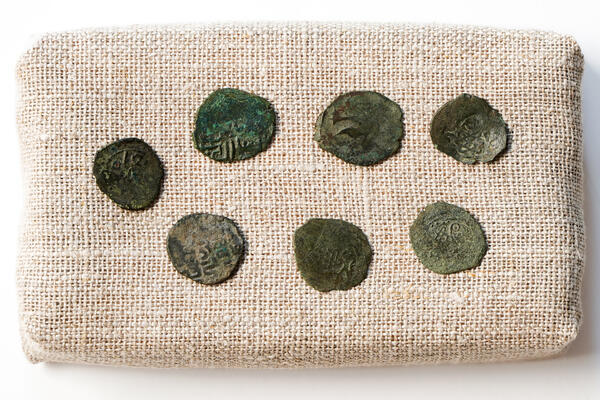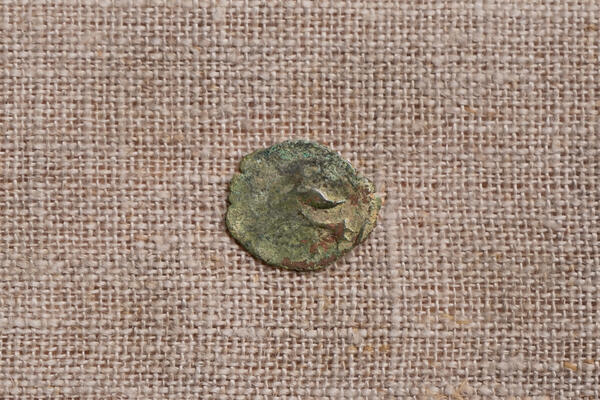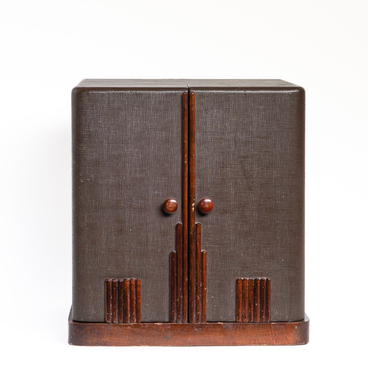A pulo is a Russian minor coin of the late 14th–16th centuries, similar to the coins of the Golden Horde. Since the end of the 14th century pulos were minted in Moscow grand principality (Moscow, Kolomna, Dmitrov, Mozhaisk, Pereyaslavl, Maloyaroslavets), Nizhny Novgorod grand principality (Nizhny Novgorod, Gorodets, Suzdal) and especially in Tver grand principality (Tver, Gorodny, Kashin, Mikulin). The coins were dubbed after the name of the place of minting: “pulo Moskovskoe”, “pulo Tverskoe”. Coins were minted from copper. The weight of one coin, depending on the place and date of manufacture could be from 0.7 to 2.5 g. The coins had pictures of riders, warriors, animals, birds, names of towns or the names of the princes that minted the coins. The denomination of the coin was so insignificant that one silver piece could be exchanged for 60–70 copper pulos.
The pulo was in circulation until the end of the 16th century. These coins are mentioned in the documents of the 16th and the beginning of the 17th centuries. The copper kopecks and money minted under Alexei Mikhailovich during the monetary reform (along with the larger copper denominations) should not be confused with pulos. Copper kopecks and coins of the 1650s, with a copper content comparable to the pulo, had an assigned value and had to be valued on a par with silver, that is 50–00 times more valuable than the real value.
The coin “Kolomna bird” is minted on the Russian planchet and has an inscription. On the reverse side there is a floral design, which looks like the Arabic ligature. On the obverse of the coin is a soaring bird, which became the main image of the Kolomna coins. The coin is dated to the time of the Kulikovo battle, which was directly connected with Kolomna.
From Kolomna, Grand Prince Dmitry Ivanovich, leading the Russian troops, went to the Kulikovo Field, and he brought back his victory and the glorious name of Donskoy. In honor of voyevoda Dmitry Bobrok, who turned the tide of the battle, Dmitry Donskoy founded the Bobrenev Monastery, a beautiful panorama of which can be seen from all points of the historic center of the city. The famous Don icon of the Mother of God, especially revered in the city, was painted for the Assumption Cathedral of the Kolomna Kremlin in the name of the River Don, next to which the battle of Kulikovo took place. A copy of the icon has long been on the Pyatnitskie gate of the Kolomna Kremlin, built on the site of those from which Dmitry Donskoy went to the Kulikovo Field.
The pulo was in circulation until the end of the 16th century. These coins are mentioned in the documents of the 16th and the beginning of the 17th centuries. The copper kopecks and money minted under Alexei Mikhailovich during the monetary reform (along with the larger copper denominations) should not be confused with pulos. Copper kopecks and coins of the 1650s, with a copper content comparable to the pulo, had an assigned value and had to be valued on a par with silver, that is 50–00 times more valuable than the real value.
The coin “Kolomna bird” is minted on the Russian planchet and has an inscription. On the reverse side there is a floral design, which looks like the Arabic ligature. On the obverse of the coin is a soaring bird, which became the main image of the Kolomna coins. The coin is dated to the time of the Kulikovo battle, which was directly connected with Kolomna.
From Kolomna, Grand Prince Dmitry Ivanovich, leading the Russian troops, went to the Kulikovo Field, and he brought back his victory and the glorious name of Donskoy. In honor of voyevoda Dmitry Bobrok, who turned the tide of the battle, Dmitry Donskoy founded the Bobrenev Monastery, a beautiful panorama of which can be seen from all points of the historic center of the city. The famous Don icon of the Mother of God, especially revered in the city, was painted for the Assumption Cathedral of the Kolomna Kremlin in the name of the River Don, next to which the battle of Kulikovo took place. A copy of the icon has long been on the Pyatnitskie gate of the Kolomna Kremlin, built on the site of those from which Dmitry Donskoy went to the Kulikovo Field.






